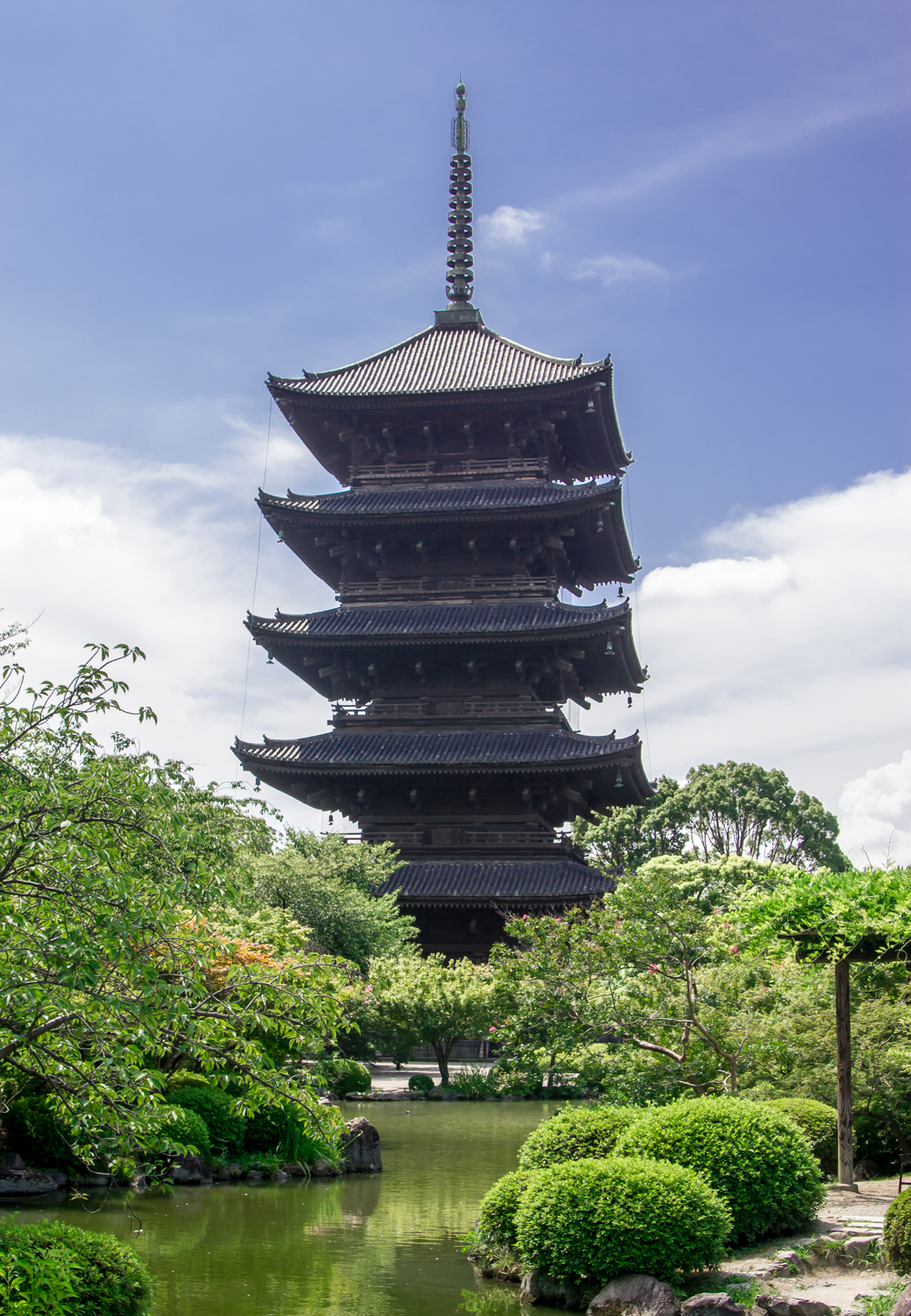

five-story pagoda / To-ji Temple
The five-story pagoda at Toji Temple is one of Japan's representative Buddhist architectural structures, loved by many for its grandeur and historical value. The pagoda boasts a height of 55 meters, making it the tallest wooden structure in Japan. The present pagoda was rebuilt in 1644 during the Edo period with the assistance of Tokugawa Iemitsu, and has burned down four times in the past. Built in the Heian period, the five-story pagoda served as the center of Buddhist worship and protection of the Heian-kyo capital. The design of the five-story pagoda reflects the Buddhist worldview, with each layer symbolizing one of the five elements: earth, water, fire, wind, and sky. The structure is not merely decorative, but is designed to withstand earthquakes, wind, and snow through the use of advanced architectural techniques. Inside the pagoda, a group of Buddhist statues centering on Shakyamuni Buddha are enshrined, serving as the object of worship.